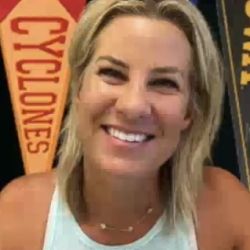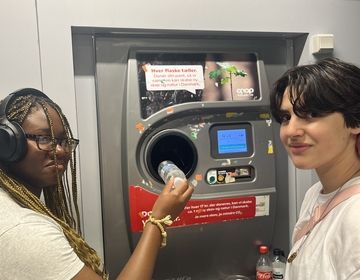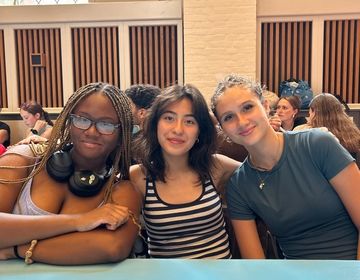Design Thinking for the Future

How can we design neighborhoods that allow for renewable resources and sustainable ecosystems that
serve the needs of the people who live there?
Where do we put green spaces, where do we grow local food? Where can we gather, discuss, and solve problems?

If form follows availability, what is the most resourceful approach to new construction? We discussed how to plan new places and how to learn from pioneers to rework existing communities.

We saw the process in action on the island of Samso, visited buildings like the UN City that detect conditions and maximize the energy efficiency. We saw local sourcing on a rooftop farm, from a company connecting fishermen to restaurants, and on the island that grows practically. all of its food.

Is the market ready for these future leaders? Because we found that bio based materials, circular economies, local sourcing, aerated concrete, and minimalism are the way forward.

Students learned that design creates new opportunities and hope for the future...and they are the designers of our future.
Related Posts
Lessons from Samsø: Renewable Energy Island
Come with us to Samsø! Learn about the energy transition and organic farming in a small island community in Denmark.
Sustainability in Copenhagen: Urban farms and Neighborhoods
Join us as we collect bottles to return them at a grocery store and receive pant money! We also took a tour of two different sustainable initiatives in Copenhagen, ØsterGRO urban farm and the neighborhood of Nordhavn.
Community Dining and Museums
Visit the Danish Design Museum! We also celebrate a student's birthday and our week highlight was eating at Absalon, a community space where we had a communal dinner.



